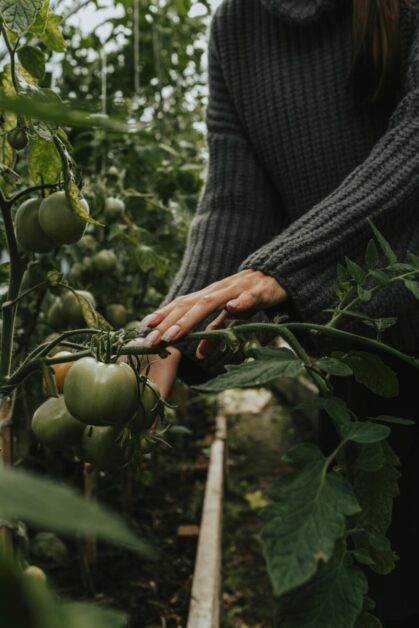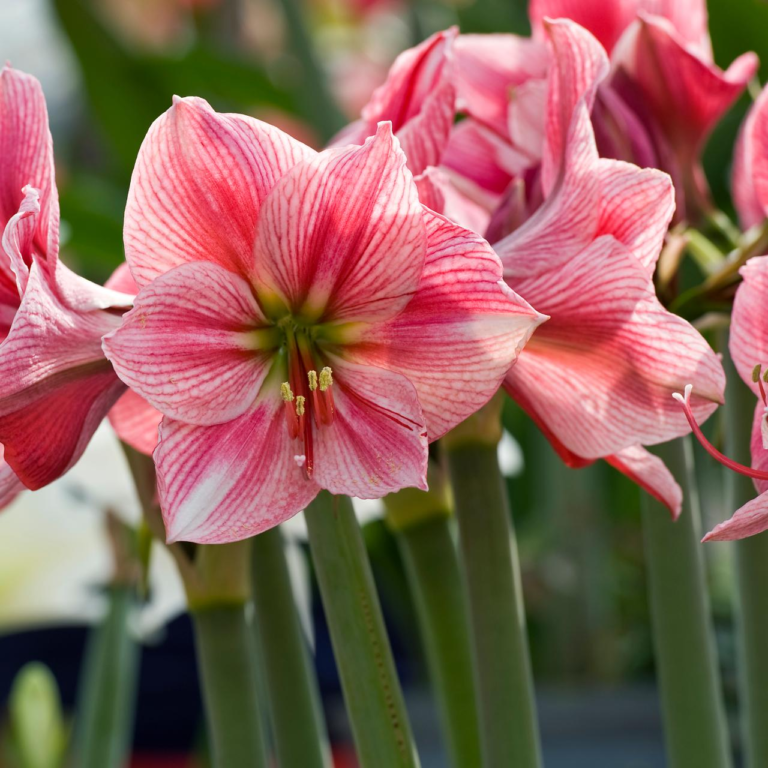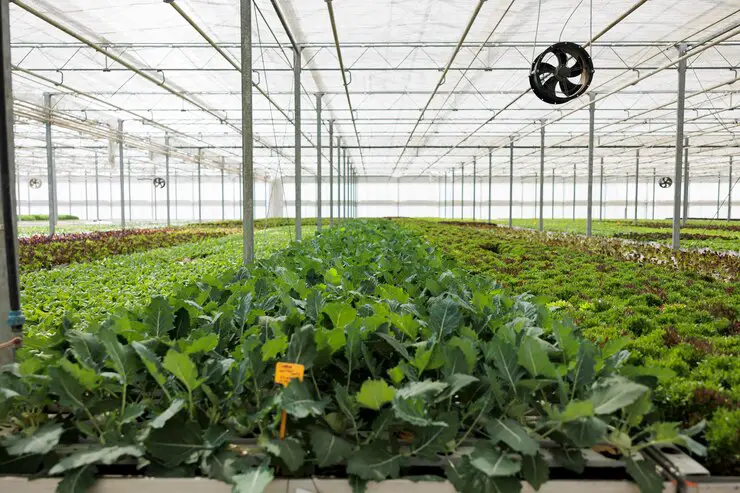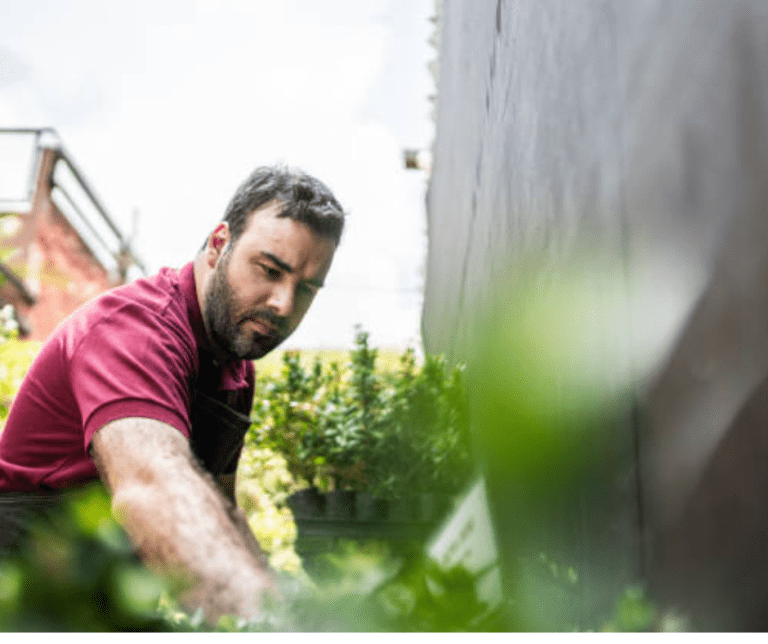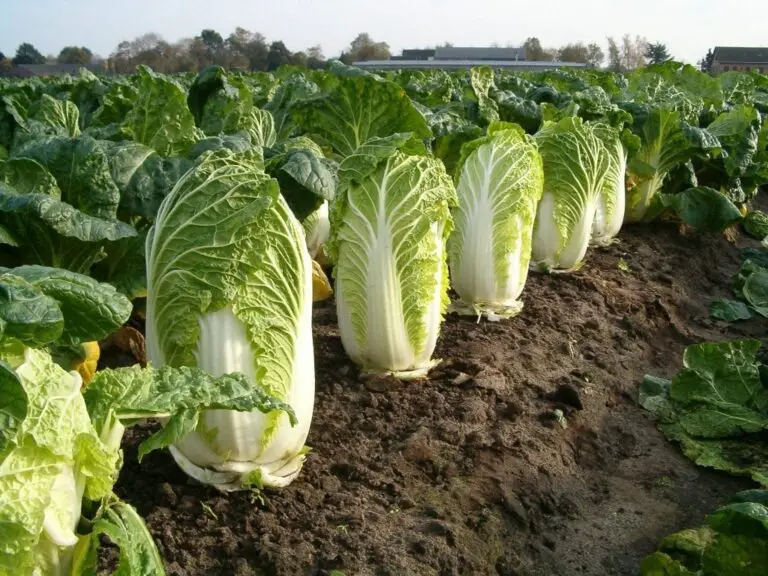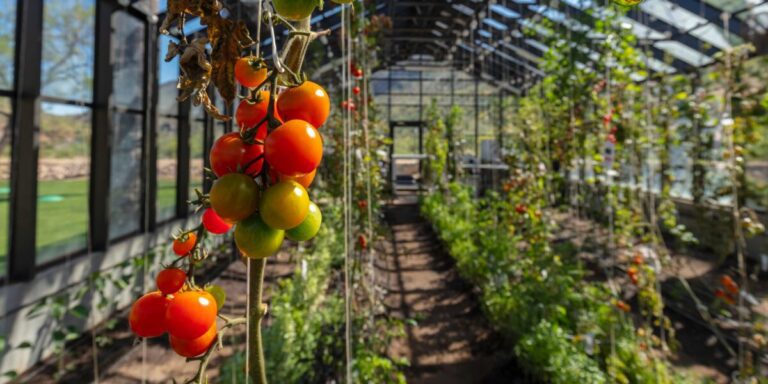Beginners Guide to CO2: How to Boost Your Plant Growth with Carbon Dioxide
Table of Contents
Understanding the Importance of Plant Growth with Carbon Dioxide
Carbon dioxide (CO2) is an essential component in the process of photosynthesis, which is how plants convert light energy into chemical energy, producing oxygen and glucose. Without an adequate supply of CO2, plants struggle to grow and develop properly.

CO2 is essential for plant growth because it acts as a building block for carbohydrates, proteins, and lipids. These compounds form the basis for plant structure, function, and reproduction. Additionally, CO2 is involved in regulating stomatal opening and closing, which influences a plant’s ability to take in water and nutrients. In short, without enough CO2, plants cannot thrive.
One common question gardeners have is how much CO2 is necessary for optimal plant growth. The ideal CO2 concentration varies depending on the type of plant, but generally, a range of 1000-1500 parts per million (ppm) is recommended for most plants. However, it is important to note that some plants, such as certain types of orchids, have lower CO2 requirements, while others, like certain types of fruiting plants, may benefit from higher CO2 levels. By monitoring CO2 levels and ensuring they fall within the appropriate range for your specific plants, you can help maximize their growth.
The Basics of Photosynthesis and CO2 Absorption
Photosynthesis is a fundamental process that sustains life on our planet, and understanding its basics can greatly enhance your understanding of how plants grow and thrive. At its core, photosynthesis is the process by which plants convert light energy from the sun into chemical energy in the form of glucose. This energy is vital for a plant’s growth and development, as well as for the production of oxygen. It is a complex series of chemical reactions that occur within the chloroplasts of plant cells.
One essential component of photosynthesis is carbon dioxide (CO2) absorption. During photosynthesis, plants take in CO2 from the surrounding environment through tiny pores on their leaves called stomata. The CO2 is then combined with water, which is absorbed through the plant’s roots, to create glucose and oxygen. This process not only serves as a source of energy for the plant but also contributes to the balance of atmospheric gases.
To fully appreciate the significance of CO2 absorption in photosynthesis, it is important to recognize the interconnectedness of plants, animals, and the environment. Plants play a crucial role in maintaining the balance of CO2 and oxygen in the atmosphere. They absorb excessive CO2, a greenhouse gas, helping to mitigate climate change. Simultaneously, plants release oxygen, which is essential for the survival of other organisms, including humans. By understanding the role of CO2 absorption in photosynthesis, we can better appreciate the indispensable role plants play in the overall health and sustainability of our planet.
Identifying the Signs of Carbon Dioxide Deficiency in Plants
Plants require carbon dioxide (CO2) for photosynthesis, the process by which they convert sunlight, water, and CO2 into glucose and oxygen. When a plant experiences a deficiency in CO2, it can manifest various signs that indicate its struggle to fulfil its energy needs. One common sign is stunted growth, where plants appear smaller and less developed than expected. This occurs because limited CO2 inhibits the plant’s ability to produce glucose, which is essential for cell division and growth. Additionally, insufficient CO2 levels can lead to weakened stems and leaves, making the plant more susceptible to diseases and pests.
Yellowing or discolouration of leaves is another noticeable characteristic of CO2 deficiency. When a plant doesn’t have enough CO2, it prioritizes the allocation of available energy to crucial functions, such as maintaining vital organs. As a result, chlorophyll production is hindered, leading to a decrease in the vibrant green colour typically associated with healthy leaves. Instead, the leaves may exhibit shades of yellow or even pale white, indicating the reduced production of chlorophyll and the plant’s struggle to carry out photosynthesis efficiently.
In order to rectify CO2 deficiency in plants, it is crucial to identify the signs early on and take appropriate measures. Providing ample CO2 levels can significantly enhance the growth and overall health of plants. In the following sections, we will explore different methods and techniques for CO2 enrichment, allowing you to create an optimal growing environment for your plants. We will also discuss the importance of monitoring and adjusting CO2 levels, common mistakes to avoid, and how to maximize the benefits of CO2 enrichment in conjunction with proper lighting and nutrient balance. So, let’s delve further into the realm of CO2 and its impact on plant growth and vitality.
Different Methods of CO2 Enrichment for Indoor Gardens

Enhancing the carbon dioxide (CO2) levels in indoor gardens is essential for promoting healthy and vigorous plant growth. There are several methods available for CO2 enrichment, each with its own advantages and considerations. In this section, we will explore some of the different methods commonly used for indoor gardens.
One popular method of CO2 enrichment is through the use of compressed CO2 cylinders or tanks. These tanks contain highly concentrated CO2, which can be released into the growing environment using a regulator and tubing system. This method allows for precise control of CO2 levels and is particularly effective for larger indoor gardens. However, it requires regular monitoring and refilling of the tanks to ensure a steady supply of CO2.
Another method is through the use of CO2 generators or burners, which produce CO2 gas by burning a fuel source such as natural gas or propane. These generators release both heat and CO2 into the growing environment, providing a dual benefit. They are ideal for larger indoor gardens or spaces where heating is also required. However, they require careful monitoring to prevent the buildup of excess heat and CO2, as this can be detrimental to plant health.
In addition to these methods, there are also CO2 enrichment systems that utilize fermentation and biofiltration processes. These systems rely on organic materials, such as sugar solutions or compost, to produce CO2 gas. This method is cost-effective and environmentally friendly, but it may require more maintenance and attention to ensure proper CO2 generation.
When choosing a CO2 enrichment method for your indoor garden, it is important to consider factors such as the size of your space, the specific needs of your plants, and your budget. Additionally, proper ventilation is crucial to distribute CO2 evenly throughout the growing environment. By understanding the different methods of CO2 enrichment and their unique considerations, you can select the right approach to optimize the growth and health of your indoor plants.
Choosing the Right CO2 Source for Your Plants
When it comes to choosing the right CO2 source for your plants, there are several options to consider. Each option offers its own benefits and drawbacks, so it’s important to understand your specific needs and goals before making a decision.
One popular choice is using compressed CO2 tanks or cylinders. These tanks contain pure CO2 gas and can be easily controlled and regulated using a CO2 regulator. This option is ideal for larger setups or commercial operations where a steady and consistent supply of CO2 is needed. Additionally, compressed CO2 tanks are readily available and can be refilled or exchanged when empty.

Another option to consider is using CO2 generators or burners. These devices work by burning natural gas or propane to produce CO2 gas. This method is convenient for indoor gardens or smaller setups where a continuous supply of CO2 is required. However, it’s important to ensure proper ventilation when using CO2 generators to avoid any potential safety hazards.
Overall, the choice of CO2 source ultimately depends on the size of your garden, your specific requirements, and your budget. It’s recommended to consult with a gardening expert or conduct thorough research to determine the best option for your plants.
Understanding the Optimal CO2 Levels for Different Types of Plants
Different types of plants have varying optimal levels of carbon dioxide (CO2) for growth and development. One important factor to consider is the type of plant you are cultivating, as some species have higher CO2 requirements than others. For example, leafy greens such as lettuce and spinach generally thrive in lower CO2 levels, ranging from 200-400 parts per million (ppm). On the other hand, fruiting plants like tomatoes and peppers prefer higher CO2 concentrations, typically ranging from 1,000-1,500 ppm.
Optimal CO2 Levels for Different Types of Plants,-
| Plant Type | Optimal CO2 Range (ppm) | Additional Notes |
|---|---|---|
| Leafy Greens | 400 – 800 | Leafy vegetables like lettuce and spinach thrive in lower CO2 levels. |
| Fruit-bearing Plants | 800 – 1200 | Plants like tomatoes and peppers benefit from higher CO2 levels during flowering and fruiting stages. |
| Herbs | 400 – 800 | Herbs such as basil and cilantro do well in moderate CO2 concentrations. |
| Flowering Plants | 800 – 1200 | Flowers like roses and orchids benefit from elevated CO2 during bloom. |
| Cacti and Succulents | 200 – 400 | Desert plants are adapted to lower CO2 levels and can thrive in reduced concentrations. |
| Tropical Plants | 800 – 1200 | Plants like ferns and palms generally prefer higher CO2 levels. |
| Crops (e.g., Wheat, Rice) | 1200 – 1500 | Some staple crops benefit from elevated CO2 for increased productivity. |
| Aquatic Plants | 200 – 400 | Plants in aquariums and hydroponic systems often require lower CO2 levels. |
| Carnivorous Plants | 400 – 800 | These plants, like Venus flytraps, generally do well in moderate CO2 environments. |
Maintaining the ideal CO2 levels is crucial for maximizing growth rates, photosynthesis efficiency, and crop yields. Insufficient CO2 levels can limit plant growth, leading to smaller and less vigorous plants. On the contrary, excessive levels of CO2 can result in a phenomenon called CO2 toxicity, where plants may exhibit symptoms such as leaf curling, yellowing, or stunted growth. Achieving optimal CO2 levels involves careful monitoring and adjustment to ensure the right balance for each plant’s specific requirements.

DIY CO2 Generation: Exploring Natural and Homemade Methods
Exploring natural and homemade methods for DIY CO2 generation can be a fun and cost-effective way to enhance plant growth in your indoor garden. By providing plants with an additional source of carbon dioxide, you can help optimize photosynthesis and promote healthy development. While there are several commercial CO2 generators available on the market, natural and homemade methods can be equally effective and more affordable.
One popular method for DIY CO2 generation is yeast fermentation. This involves creating a yeast and sugar mixture that produces carbon dioxide as a byproduct. To set up a yeast fermentation CO2 system, you will need a plastic bottle, a rubber stopper with holes, a tubing, and a yeast and sugar solution. Simply mix warm water with sugar and yeast, and place the mixture inside the plastic bottle. Insert the rubber stopper with holes, one for the tubing and the other for allowing air to escape. Connect the tubing to an air stone or diffuser and place it in your indoor garden. As the yeast ferments, it will release carbon dioxide into the air, providing your plants with the CO2 they need for optimal growth.
Another natural method for CO2 generation is through the use of organic materials such as compost. Composting not only provides a rich source of nutrients for plants but also produces carbon dioxide as decomposition takes place. To utilize composting for CO2 enrichment, you can place a compost bin near your indoor garden. As the organic material decomposes, it will release carbon dioxide, which can be beneficial for your plants. This method allows for a continuous and sustainable source of CO2 and also helps in recycling organic waste.
While natural and homemade methods for CO2 generation can be effective, it is important to keep in mind that they may not provide a consistent and controlled release of carbon dioxide. Factors such as temperature, humidity, and the amount and type of organic material used can affect the rate of CO2 production. Therefore, it is essential to regularly monitor and adjust the CO2 levels in your growing environment to ensure that your plants are receiving optimal amounts. In the next section, we will discuss the role of proper ventilation in CO2 distribution and offer tips on how to monitor and adjust CO2 levels effectively.
The Role of Proper Ventilation in CO2 Distribution
Proper ventilation plays a crucial role in the distribution of carbon dioxide (CO2) within indoor gardens. When it comes to cultivating plants, maintaining good airflow is essential for the health and growth of your green darlings. Ventilation ensures that the CO2-enriched air reaches all corners of the growing space, allowing plants to effectively take in the CO2 needed for photosynthesis.
One of the main functions of ventilation is to remove stagnant air and replace it with fresh, CO2-rich air. Without proper airflow, the concentration of CO2 can become uneven, leading to inefficient absorption by plants. At the same time, inadequate ventilation can cause other issues, such as high humidity, temperature fluctuations, and the build-up of pests and pathogens. To avoid these problems, it is crucial to have well-designed ventilation systems that provide a steady supply of fresh air and maintain appropriate CO2 levels.
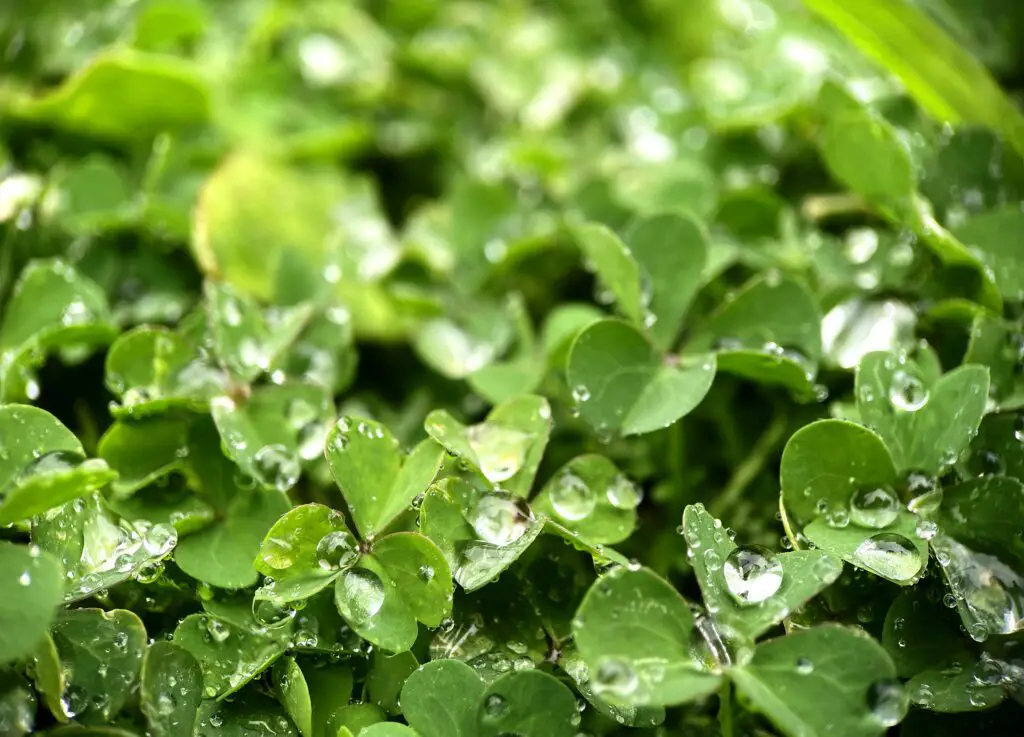
There are various methods for achieving proper ventilation in indoor gardens. One common approach is to use fans to circulate the air within the growing space. Oscillating fans can help distribute the CO2 evenly, ensuring that every plant receives an adequate supply. Additionally, exhaust fans are essential for expelling stale air and controlling humidity levels. Creating a balanced airflow system with both intake and exhaust fans is crucial for maintaining optimal CO2 distribution and a healthy growing environment.
Monitoring and Adjusting CO2 Levels in Your Growing Environment
To ensure optimal plant growth and development, it is crucial to monitor and adjust the levels of carbon dioxide (CO2) in your growing environment. As plants absorb CO2 during the process of photosynthesis, maintaining the right amount of this gas in your indoor garden can significantly enhance their productivity. However, having excessively high or low levels of CO2 can be detrimental to plant health and performance. Therefore, it is important to regularly monitor and adjust the CO2 levels to create an ideal environment for your plants to thrive.
One of the most effective ways to monitor CO2 levels is by using a digital CO2 meter. This device provides accurate and real-time measurements of CO2 concentration, allowing you to assess whether the levels are within the desired range. When selecting a digital CO2 meter, look for one that has a wide measurement range, is easy to use, and provides reliable data. Additionally, some meters also offer additional features such as temperature and humidity monitoring, which can be beneficial for maintaining an overall optimal growing environment. By regularly monitoring CO2 levels, you can detect any significant deviations and take immediate corrective action to prevent plant stress or damage.
Monitor and adjust CO2 levels with this table,-
| Aspect | Importance | Recommendations |
|---|---|---|
| CO2 Monitoring Tools | High | 1. Utilize reliable CO2 monitors or sensors. |
| 2. Regularly calibrate monitors for accuracy. | ||
| 3. Place sensors at canopy level for precise readings. | ||
| Optimal CO2 Levels | Critical | 1. Determine the appropriate CO2 range for your plants. |
| 2. Adjust levels based on growth phase (e.g., higher during daylight). | ||
| 3. Regularly check and maintain optimal CO2 concentration. | ||
| CO2 Enrichment Methods | High | 1. Implement CO2 generators for controlled supplementation. |
| 2. Consider compressed CO2 tanks for consistent supply. | ||
| 3. Evaluate natural methods such as fermentation or composting. | ||
| Ventilation and Air Exchange | Moderate | 1. Ensure proper air circulation to prevent CO2 buildup. |
| 2. Use exhaust fans to remove stale air and introduce fresh air. | ||
| 3. Monitor CO2 levels regularly in different areas of the grow space. | ||
| Adjusting CO2 for Growth Phases | High | 1. Increase CO2 levels during the vegetative phase. |
| 2. Boost CO2 concentration further during flowering. | ||
| 3. Gradually reduce CO2 levels during the ripening stage. | ||
| CO2 and Temperature Control | Moderate to High | 1. Maintain an optimal temperature range for CO2 absorption. |
| 2. Consider using CO2 controllers linked to temperature sensors. | ||
| 3. Monitor and adjust temperature to enhance CO2 efficiency. | ||
| Regular Monitoring Schedule | High | 1. Establish a consistent schedule for CO2 level checks. |
| 2. Record and analyze data to identify trends or deviations. | ||
| 3. Adjust CO2 supplementation based on monitoring results. |
Adjusting CO2 levels in your growing environment requires careful consideration of the factors that influence the uptake and release of this gas. One method of adjusting CO2 levels is through the use of a CO2 enrichment system. These systems typically involve introducing CO2 gas into the growing area, either through natural methods or with the help of specialized equipment such as generators or regulators. The most common CO2 enrichment method is known as injection, where CO2 is released directly into the growing area. Another method involves using CO2 generators that produce the gas through the combustion of natural gas or propane. These generators are commonly used in larger-scale operations but can also be suitable for smaller indoor gardens. When adjusting CO2 levels, it is crucial to avoid sudden spikes or drastic fluctuations that can stress plants. Gradual adjustments are recommended, allowing plants to acclimate to the new CO2 levels gradually.
Common Mistakes to Avoid When Using CO2 for Plant Growth
When it comes to using carbon dioxide (CO2) for plant growth, there are a few common mistakes that many growers make. One major mistake is not properly monitoring and adjusting CO2 levels in the growing environment. CO2 enrichment is only beneficial when maintained within the optimal range for each type of plant. Too little CO2 can limit plant growth, while too much can actually be harmful. By regularly monitoring CO2 levels and adjusting accordingly, you can ensure that your plants receive the right amount of this crucial element for optimal growth.
Another mistake to avoid is relying solely on CO2 enrichment without considering other factors such as lighting and nutrient balance. CO2 is just one piece of the puzzle when it comes to plant growth. In order for plants to thrive, it is essential to provide them with the right amount of light and a balanced nutrient supply. Neglecting these factors and solely focusing on CO2 may lead to suboptimal results. It is important to create a holistic approach when caring for your plants, considering all the necessary elements for their well-being.
By understanding and avoiding these common mistakes, you can maximize the benefits of CO2 enrichment for your plants. Regular monitoring and adjustment of CO2 levels, along with considering other vital factors such as lighting and nutrient balance, will help ensure optimal growth and health for your plants. Remember, creating the ideal environment for your plants requires a holistic approach that takes into account all the necessary elements for their well-being.
Maximizing the Benefits of CO2 with Proper Lighting and Nutrient Balance
Proper lighting and nutrient balance are essential factors in maximizing the benefits of CO2 for plant growth. When it comes to lighting, it is important to provide plants with the right amount and quality of light for optimal photosynthesis. Different types of plants have varying light requirements, so it is crucial to understand the specific needs of the plants you are cultivating.
To know about the benefits of CO2 with proper lighting and nutrient balance you can go through this chart,-
Here is a table that summarizes the benefits of CO2 with proper lighting and nutrient balance for plant growth:
| Benefit | Description |
|---|---|
| Increased Growth and Yield | CO2 supplementation can provide more carbon for photosynthesis, resulting in more biomass and larger harvests |
| Photosynthesis Enhancement | Higher CO2 levels can improve the efficiency of photosynthesis, allowing plants to use light more effectively and produce more energy |
| Water Use Efficiency | Plants under elevated CO2 conditions can reduce their water loss by partially closing their stomata, leading to lower water consumption and higher drought tolerance |
| Nutrient Use Efficiency | CO2 enrichment can enhance a plant’s ability to uptake and utilize nutrients, resulting in better growth and quality |
| Resistance to Pests and Diseases | Some studies suggest that plants exposed to higher CO2 levels may have increased resistance to certain pests and diseases, due to changes in their physiology and chemistry |
| Shorter Crop Cycles | CO2 supplementation can accelerate the maturation and flowering of plants, allowing for more frequent crop cycles and higher overall yield |
To determine the appropriate lighting for your plants, consider factors such as the intensity, duration, and spectrum of light. High-intensity discharge (HID) lamps, such as metal halide (MH) and high-pressure sodium (HPS) lamps, are commonly used in indoor gardening to provide the required light intensity. LED grow lights, on the other hand, are gaining popularity due to their energy efficiency and ability to emit specific light spectra that cater to plants’ needs at different stages of growth.
Aside from lighting, maintaining a proper nutrient balance is crucial for maximizing the benefits of CO2. Plants require essential macronutrients, such as nitrogen, phosphorus, and potassium, as well as micronutrients like iron, manganese, and zinc. These nutrients play vital roles in various plant functions, including photosynthesis, root development, and overall growth.
One way to ensure a nutrient-rich environment is by using a balanced fertilizer that provides all the necessary elements in the appropriate ratios. It is important to monitor nutrient levels regularly and make adjustments as needed. Overfeeding or underfeeding plants can have detrimental effects on their growth and development. Additionally, consider using organic fertilizers or incorporating compost to enhance the soil’s nutrient content naturally.
By providing the right lighting and maintaining a proper nutrient balance, you can effectively maximize the benefits of CO2 for plant growth. It is crucial to understand the specific needs of your plants to create an optimal growing environment. With the right combination of lighting, nutrients, and CO2 enrichment, you can enhance plant growth, productivity, and overall health. Stay tuned for more expert tips and practical solutions on how to take your plant cultivation to the next level.

Exploring the Relationship Between CO2 and Temperature in Plant Growth
The relationship between carbon dioxide (CO2) and temperature plays a crucial role in plant growth. As experts in gardening and plant cultivation, we understand the significance of maintaining optimal conditions for your plants. Let’s delve into the intricate connection between CO2 levels and temperature, and how it affects the overall development of your plants.
Carbon dioxide serves as an essential component in the process of photosynthesis. During this process, plants absorb CO2 from the air, while sunlight and chlorophyll work together to convert it into oxygen and glucose. However, the rate at which this chemical reaction occurs is directly influenced by temperature. As temperatures rise, the enzymatic reactions within the plant’s cells typically accelerate, leading to faster metabolic processes. Consequently, a higher temperature increases the demand for CO2 in order to maintain photosynthesis at an optimal pace. On the other hand, low temperatures tend to slow down enzyme activity, lowering the plant’s CO2 requirements. Thus, striking the right balance between CO2 levels and temperature is crucial for achieving optimal plant growth and maximizing photosynthetic efficiency.
Understanding this relationship prompts us to address some common questions. How does temperature affect CO2 absorption in plants? Is there an optimum temperature range where plants utilize CO2 more efficiently? To answer the first question, it’s important to note that temperature influences the rate at which plants open their stomata, the tiny pores on their leaves responsible for CO2 absorption. In general, plants tend to open their stomata wider when temperatures rise, allowing for increased CO2 intake. However, extremely high temperatures can lead to stomatal closure as a protective mechanism against excessive moisture loss, thereby inhibiting CO2 absorption. Regarding the optimum temperature range, each plant species exhibits distinct preferences, but most thrive within a range of 60-75°F (15-24°C). This temperature range encourages optimal enzymatic activity, which consequently enhances the plant’s ability to utilize CO2. So, monitoring and maintaining the right temperature is crucial in ensuring proper CO2 absorption and facilitating healthy plant growth.
Enhancing Plant Resilience and Resistance with CO2 Enrichment
Plants are resilient organisms that have evolved to adapt to various environmental conditions. However, they can also face challenges from stressors such as pests, diseases, and unfavourable climates. One way to enhance plant resilience and resistance is through CO2 enrichment. Carbon dioxide, a crucial component of photosynthesis, plays a vital role in promoting healthy plant growth and development.
By increasing the concentration of CO2 in their growing environments, plant enthusiasts can create an environment that promotes robust and resilient plants. Elevated CO2 levels encourage photosynthesis, the process through which plants convert CO2 and sunlight into energy. This enhanced photosynthesis can lead to increased plant growth, improved nutrient uptake, and enhanced water-use efficiency.

Moreover, higher CO2 levels can stimulate the production of secondary metabolites, which are compounds that plants naturally produce to defend against pests and diseases. These metabolites, such as terpenes and phenolics, have been shown to possess antimicrobial and insecticidal properties. Therefore, by enriching the growing environment with CO2, plants not only receive a growth boost but also gain an extra line of defence against potential threats.
However, it is worth noting that the benefits of CO2 enrichment depend on the specific plant species and its respiratory requirements. Certain plants, like orchids and ferns, have lower CO2 demands and may not exhibit significant growth enhancements when CO2 levels are increased. On the other hand, plants such as tomatoes and cannabis thrive in environments with elevated CO2 concentrations.
To ensure optimal results, it is crucial to monitor and adjust CO2 levels according to the specific needs of the plants being cultivated. Additionally, proper ventilation is essential to maintain a balanced CO2 distribution throughout the growing space. By continually assessing and fine-tuning the CO2 levels, growers can maximize the benefits of CO2 enrichment and witness improved plant resilience and resistance in their gardens.
Case Studies: Success Stories of Using CO2 to Boost Plant Growth
In the world of gardening and plant cultivation, the use of carbon dioxide (CO2) to boost plant growth has been gaining popularity. Many gardeners and hydroponic enthusiasts have reported great success stories with the application of CO2 enrichment techniques. Let’s take a closer look at a few case studies that demonstrate the positive impact of CO2 on plant growth.
In one study conducted by researchers at a renowned agricultural university, tomato plants were grown under controlled indoor conditions with and without CO2 enrichment. The results were astonishing. The plants that received CO2 enrichment showed significantly higher rates of photosynthesis, which led to increased plant growth and higher yields. Not only did the CO2-treated plants produce more fruits, but the fruits were also larger and exhibited better colour, flavour, and shelf life.
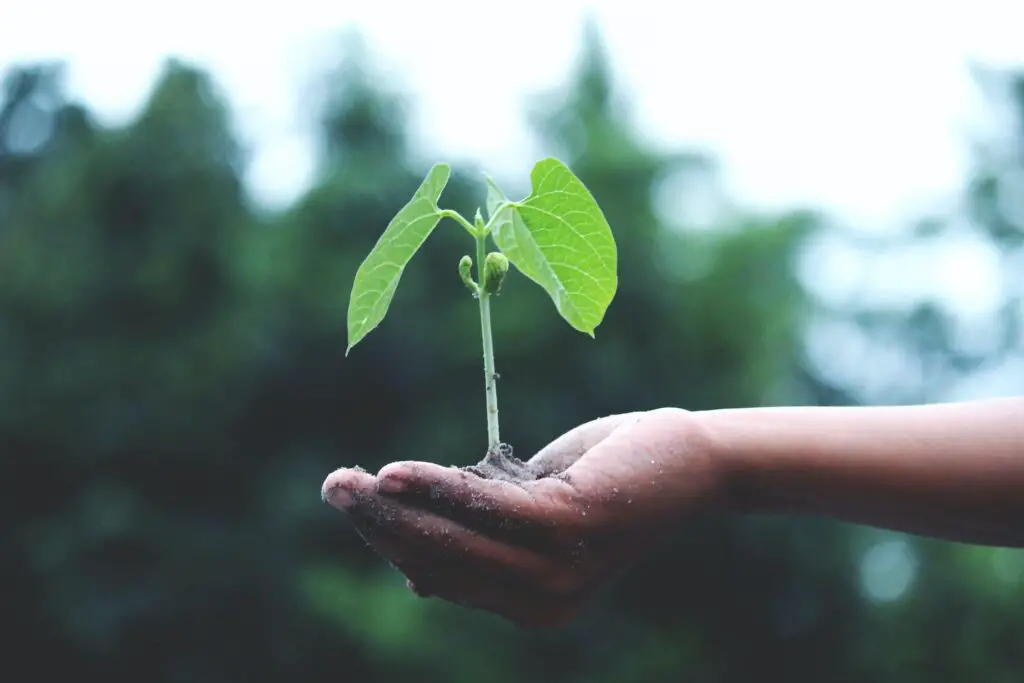
Similarly, another case study focused on the growth of lettuce plants using different CO2 enrichment methods in a hydroponic system. The researchers compared the effects of using bottled CO2, CO2 generators, and natural CO2 sources such as fermentation and composting. While all methods showed improvement in plant growth compared to the control group, the researchers found that the use of bottled CO2 resulted in the highest growth rates and overall plant health.
These success stories serve as proof that CO2 enrichment can be a game-changer in plant cultivation. With the right methods and techniques, gardeners can harness the power of CO2 to achieve remarkable results. So, if you’re looking to take your gardening or hydroponic setup to the next level, considering CO2 enrichment may be the key to unlocking the full potential of your plants.
To know more about “how to boost your plant growth with carbon dioxide” watch this below video!
Frequently Asked Questions About CO2 Enrichment for Plant Growth
Q: How does CO2 enrichment benefit plant growth?
A: CO2 enrichment is a technique that involves increasing the concentration of carbon dioxide in the growing environment to enhance plant growth. Carbon dioxide is an essential component of photosynthesis, the process through which plants convert light energy into chemical energy. By increasing the levels of CO2 in the air, plants can photosynthesize more efficiently, leading to improved growth rates, enhanced leaf development, and increased yields. Studies have shown that raising CO2 levels above the atmospheric concentration of approximately 400 parts per million (ppm) can significantly increase plant productivity, particularly in controlled indoor environments such as greenhouses or hydroponic systems.
Q: How can I measure and control CO2 levels in my growing environment?
A: Monitoring and controlling CO2 levels in your growing environment is crucial to ensure optimal plant growth. Measuring CO2 levels can be done using specialized CO2 monitors or meters, which provide accurate readings of the concentration of CO2 in parts per million (ppm). It is recommended to aim for specific CO2 levels depending on the type of plants you are growing. For example, most common plants thrive with CO2 levels ranging from 1000 to 1500 ppm. However, some high-demanding plants such as tomatoes or cucumbers may benefit from even higher CO2 concentrations, reaching up to 2000 ppm. To control CO2 levels, there are various methods available, including natural CO2 enrichment techniques such as using compost, fermenting organic materials, or generating CO2 with yeast. Alternatively, you can consider using CO2 generators or CO2 tanks that release controlled amounts of CO2 into the growing space.
How do I know if my plants are experiencing a carbon dioxide deficiency?
Some signs of carbon dioxide deficiency in plants include slow or stunted growth, yellowing leaves, and smaller-than-usual plant size.
Can I use CO2 enrichment for all types of plants?
While most plants benefit from CO2 enrichment, some plants, such as succulents and cacti, may not require additional carbon dioxide.
How do I choose the right CO2 source for my plants?
The choice of CO2 source depends on factors such as the size of your indoor garden and your budget. Options include CO2 tanks, generators, and natural methods like fermentation.
What are the optimal CO2 levels for different types of plants?
Generally, plants thrive with CO2 levels between 1000-1500 parts per million (ppm). However, some plants, like tropical species, can tolerate higher levels up to 2000 ppm.
Can I generate CO2 naturally or through homemade methods?
Yes, you can generate CO2 naturally by fermenting organic materials like yeast or by using homemade CO2 generators. However, it’s important to carefully monitor CO2 levels when using homemade methods.
Why is proper ventilation important for CO2 distribution?
Proper ventilation ensures that CO2 is evenly distributed throughout the growing space, allowing plants to effectively absorb it during photosynthesis.
How can I monitor and adjust CO2 levels in my indoor garden?
CO2 monitors or controllers can be used to measure and regulate CO2 levels. They can be set to maintain the desired ppm range automatically.
What are common mistakes to avoid when using CO2 for plant growth?
Common mistakes include exceeding optimal CO2 levels, inadequate ventilation, inconsistent CO2 distribution, and neglecting other important factors like lighting and nutrient balance.
How can I maximize the benefits of CO2 with proper lighting and nutrient balance?
CO2 enrichment works best when complemented with optimal lighting conditions and a well-balanced nutrient regimen. Providing plants with adequate light and essential nutrients enhances their ability to utilize CO2 for growth.
Is there a relationship between CO2 and temperature in plant growth?
Yes, higher CO2 levels coupled with appropriate temperatures can promote faster growth and increased yields. It is important to maintain the right temperature range for optimal plant performance.
Can CO2 enrichment enhance plant resilience and resistance?
Yes, plants grown in CO2-enriched environments tend to exhibit increased resilience and resistance to pests, diseases, and environmental stressors.
Are there any success stories of using CO2 to boost plant growth?
Yes, there are many success stories where CO2 enrichment has significantly improved plant growth and crop yields. These successes are often observed in controlled indoor gardens and commercial greenhouse settings.
How long does it take to see the effects of CO2 enrichment on plant growth?
The effects of CO2 enrichment can vary depending on various factors such as plant species, growth stage, and environmental conditions. In general, noticeable improvements in growth can be observed within a few weeks to a couple of months.

Suyash Dhoot, editor at SouthElMonteHydroponics.com, is a pioneering force in hydroponics. His expertise spans nutrient solutions and cutting-edge technology. Through meticulous editing, he elevates the site to a beacon of knowledge, offering invaluable insights. Dhoot’s dedication shapes a greener, more efficient future for agriculture.

